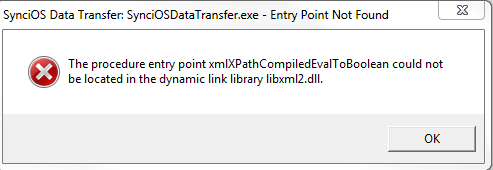

#Dll kernel32.dll nfs run code
The segment's selector is an index into aĭescriptor table the table entry for that index holds theĭescriptor's base address and limit, and its attributes and accessĪ typical DJGPP program uses 3 segments: a code segment, a data Tables are data structures which store a descriptor for each segment Info dos gdt info dos ldt info dos idt These 3 commands display entries from, respectively, Global, Local,Īnd Interrupt Descriptor Tables (GDT, LDT, and IDT). Platform: the CPU type and features, the OS version and flavor, theĭPMI version, and the available conventional and DPMI memory. Info dos sysinfo This command displays assorted information about the underlying Information about the target system and important OS structures. Info dos This is a prefix of DJGPP-specific commands which print GDB supports native debugging of DJGPP programs, andĭefines a few commands specific to the DJGPP port.

Top of real-mode DOS systems and their emulations. That use the DPMI (DOS Protected-Mode Interface) API to run on DJGPP programs are 32-bit protected-mode programs On whether your program may read, write, or execute each range.ĭJGPP is the port of GNU development tools to MS-DOS and Info proc mappings Report on the address ranges accessible in the program, with information Info proc Summarize available information about the process. This includes OSF/1 (Digital Unix), Solaris, Irix,Īnd Unixware, but not HP-UX or GNU/Linux, for example. Info proc works only on SVR4 systems that include the Several kinds of information about the process running your program. This facility, the command info proc is available to report on If GDB is configured for an operating system with

Used to examine the image of a running process using file-system Many versions of SVR4 provide a facility called `/proc' that can be Kvm proc Set current context from proc address. Kvm pcb Set current context from pcb address. Once connected to the kvm target, the following commands are The currently running kernel into GDB and connect to theįor debugging crash dumps, provide the file name of the crash dump as an Uses this interface to allow you to debug live kernels and kernel crashĭumps on many native BSD configurations. Memory images, including live systems and crash dumps. Interface that provides a uniform interface for accessing kernel virtual Name first, before it searches for a convenience variable.īSD-derived systems (FreeBSD/NetBSD/OpenBSD) have a kernel memory On HP-UX systems, if you refer to a function or variable name thatīegins with a dollar sign, GDB searches for a user or system
#Dll kernel32.dll nfs run windows
This section describes details specific to particular nativeġ8.1.4 Features for Debugging DJGPP Programsġ8.1.5 Features for Debugging MS Windows PE executables Operating system configurations, which are usually the same for severalĭifferent processor architectures, and bare embedded processors, which There are three major categories of configurations: nativeĬonfigurations, where the host and target are the same, embedded This chapterĭescribes things that are only available in certain configurations. While nearly all GDB commands are available for all native andĬross versions of the debugger, there are some exceptions.


 0 kommentar(er)
0 kommentar(er)
